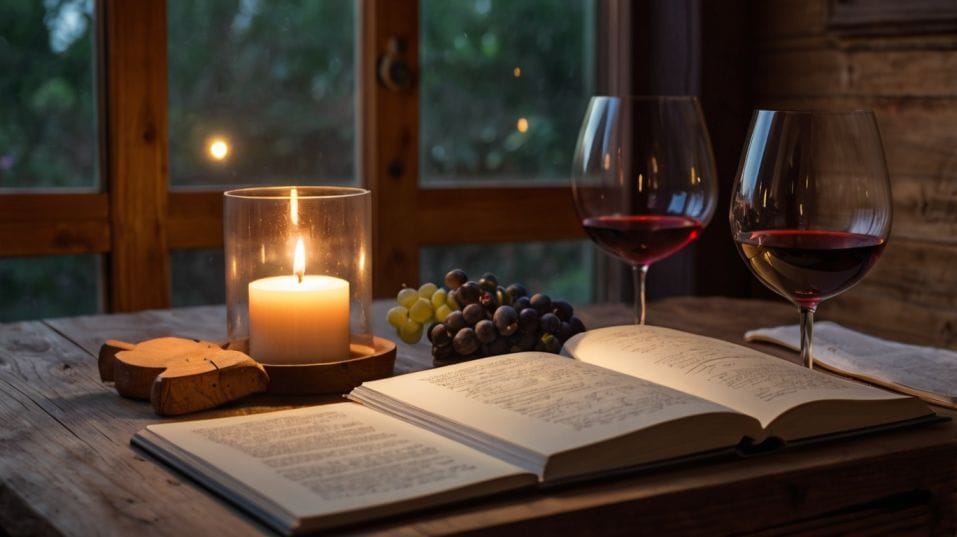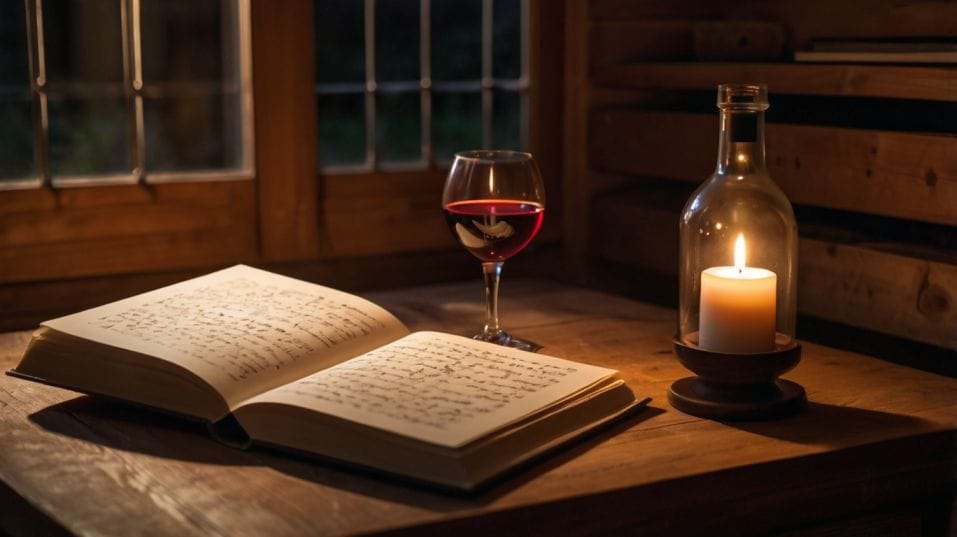How to Build a Simple At-Home Wine Corner
Create a simple at-home wine corner that fuels your curiosity, sharpens your palate, and transforms how you taste—no cellar required.

What if your wine journey didn’t start at a vineyard, but right in the corner of your living room? A simple, well-thought-out wine corner—designed with purpose, not pretense—can change the way you taste and learn.
No need for cellars or luxury racks. Just a space that makes wine visible, approachable, and part of your rhythm. This guide shows you how to build a corner that sparks curiosity and sharpens your palate—right at home.
Design a Space That Encourages Exploration
Start with placement. The best wine corner isn’t defined by size—it’s defined by environment. Wine likes quiet.
Choose a place away from direct sunlight, temperature swings, and vibrations. Kitchens and laundry rooms are often too warm or unstable. Instead, look to a hallway nook, a section of the dining room, or even part of your living space.
Temperature consistency matters more than precision. Aim for a spot that stays between 55–65°F year-round. For most wines you’ll be drinking in the next few months, this is perfectly safe.
Don’t worry about perfect humidity or professional storage unless you’re aging bottles long-term. If your space runs warm, consider a small wine fridge, but don’t default to it. Learn what your space naturally allows, and work with it.
What matters most is access. You want wine to be part of your daily rhythm—visible, reachable, and easy to interact with.
When wine is tucked away or forgotten, it becomes intimidating. When it’s present and familiar, it becomes part of your language.

Use Storage That Matches Your Habits
Forget bulky racks made for showrooms. Choose storage that fits how you buy and drink. If you keep 6 to 12 bottles on hand at a time, a compact wooden rack, metal cradle, or modular cube system will do the job.
Bottles should rest on their sides to keep corks moist. Leave room for labels to be visible—part of enjoying wine is looking at it.
Keep your setup flexible. You may find yourself going through phases—more whites in the summer, a fascination with skin-contact wines, or an interest in a new region.
Modular storage lets you adapt. Even a small cart with shelves, drawers, and a flat surface on top can function as both wine storage and tasting station.
And remember, less is more. You’re not building an archive. You’re curating an evolving selection that feeds your learning and suits your lifestyle.
Build a Tasting Toolkit You’ll Actually Use
A few essential tools make tasting more focused and satisfying.
Start With Glassware
First: proper glassware. You don’t need a dozen styles—just two or three well-shaped glasses with thin rims, enough bowl for a swirl, and a taper to concentrate aromas.
Universal or all-purpose glasses are perfect for most wines. Clarity matters more than complexity. If you can see and smell clearly, you’re equipped to learn.
Keep Tools Simple and Reliable
A quality corkscrew—double-hinged with a sharp worm—is a must. Avoid bulky contraptions. The tactile ritual of opening wine is part of the experience. Keep a clean cloth on hand to wipe the bottle or dry the glass after rinsing.
Include a journal, a tasting notebook, or a digital app. Not for scoring or showing off, but to train your attention.
Write down how a wine smells before and after it opens. Note what you taste, what it reminds you of, what you’d pair it with.
Describe texture and structure, not just flavor. This practice builds fluency. Over time, your notes become your personal map through the world of wine.
Add a small decanter if your wines feel tight or closed on the nose. A basic one works fine—it’s about exposing the wine to air, not putting on a show.
A wine key, a couple of coasters, and a candle for ambiance complete the setup. This is about creating a space where you want to linger, not rush.
Curate Wines That Teach, Not Just Please
Start by choosing wines that represent contrast. This is how you learn structure, style, and regional character.
Instead of doubling up on familiar favorites, keep a mix of light and full-bodied, fresh and oxidative, high-acid and plush. Think of it as building a vocabulary of taste.
Have a wine that’s bright and mineral. Another that’s juicy and tannic. A bottle from a classic region and one from somewhere off the beaten path.
You don’t need rare or expensive bottles. You need bottles that show you something new with every sip.
Avoid stocking based on price or prestige. Instead, stock for purpose. What do you want to understand next? Maybe how oak changes texture.
Maybe the difference between old world and new world expressions of the same grape. Let curiosity shape your shelf.
Taste often, but don’t rush. Revisit bottles over several days. See how they evolve. Take notes and compare. Find your own preferences. That’s the difference between drinking wine and developing taste.
Build Rituals That Deepen Your Palate
Wine teaches best when you pay attention. Make tasting a quiet, focused ritual. Clear the table. Pour a small glass. Smell deeply before you sip.
Think about what you’re tasting. What’s happening on your tongue? Is it sharp or soft? Long or fleeting? How does it feel when paired with food?
Try Purposeful Side-by-Side Tasting
Try tasting the same wine in two glasses, or at two temperatures. Pour a small amount in a tumbler and the rest in a proper glass. See how aroma, structure, and finish change. These side-by-side experiments teach more than any book.
Repetition builds confidence. Each time you open a bottle, you gain more insight. Don’t be afraid to taste critically.
You don’t need to like everything. Dislike is informative. The more precisely you can describe why, the more refined your choices will become.
Make time for one “serious” tasting a week—just you, the wine, and a few quiet minutes. No distractions. Just focused exploration. That’s how palate memory builds and preferences sharpen.
Let Your Wine Corner Reflect You
Skip the clichés. No need for wine-themed signs or novelty cork holders. Think instead about what supports your habit.
Maybe a stack of wine books you actually read. A small Bluetooth speaker for background music. A map of Burgundy or Sicily or the Finger Lakes.
This is your learning space. Let it grow with you. Add tools when they serve a purpose. Add decor when it inspires you. Make it a place where you want to taste, reflect, and return.
And don’t be afraid to share the space. A wine corner can host spontaneous tastings with friends, cozy evenings with a partner, or solo nights of discovery. Whatever your style, let it be real. Let it be useful. Let it be yours.
Final Thoughts
A well-designed wine corner isn’t about luxury or excess—it’s about intention. With a little planning and the right mindset, you can create a space that makes wine more approachable, tasting more rewarding, and learning more consistent.
Start by stocking smarter. Taste slower. Take notes. Pay attention to what speaks to you.
Over time, your palate will sharpen, your curiosity will grow, and your corner will become more than just a storage space—it’ll be a classroom, a ritual, and a reflection of your personal wine journey.
So open something today. Taste it with focus. Write down what you discover. And make one small addition to your wine corner that makes your next glass even better.




